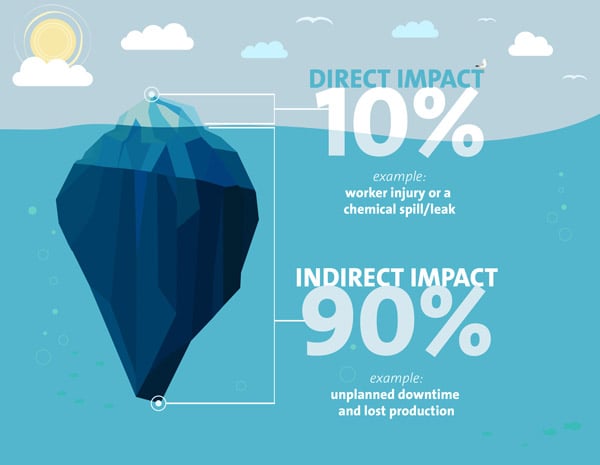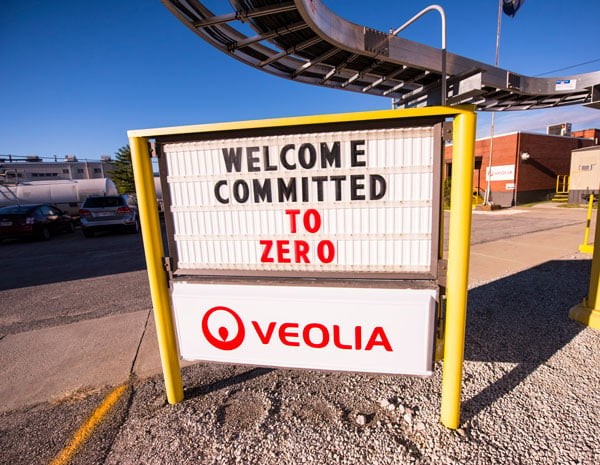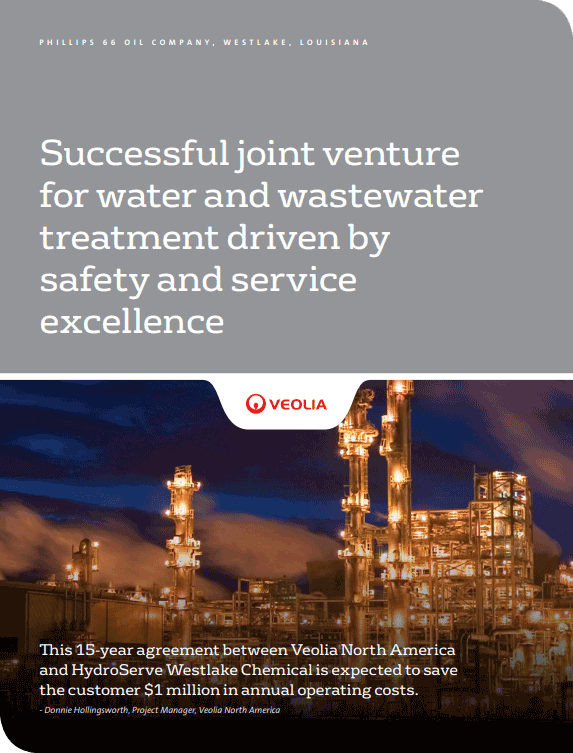When is Safety Most Important?
You probably guessed it, always.
For any business, safety is the one core function that can never be compromised. In the industrial space, in particular, where the consequences of a safety incident are often more severe, times of heightened risk are not the time to start thinking about implementing environmental health and safety (EHS) protocols. When a crisis arises, you want every employee to be armed and confident in every step they take. Whether it’s a hurricane on the horizon or a global pandemic like we’re facing now with COVID-19, an unshakable culture of safety will help you and your employees stand up to the challenge.
Workplace safety and its impact on the bottom line
Every company talks about the importance of building a strong culture of safety. Too often, however, other organizational objectives such as efficiency, productivity, throughput and cost savings take precedent.
In a 2017 survey by the National Safety Council (NSC), which focused on construction (the industry that experiences the most workplace incidents annually), 58% of respondents said that they felt safety took a backseat to productivity. A similar percentage said that management only does the minimum required by law to keep employees safe.
Unfortunately, this attitude is prevalent across many organizations in the industrial space. And it can largely be attributed to the “hidden” impact that safety incidents have on the bottom line.
After all, the purpose of any EHS program is to prevent incidents from occurring. There is no predictive metric or crystal ball we can use to accurately see incidents that would have happened had we not been safe.
We can, however, better understand the impact of safety by looking at both the direct and indirect consequences of incidents that do happen. A good way to visualize this is to use the “iceberg analogy” — with the portion that lies above the water representing the direct impacts and the portion that lies beneath the water representing the indirect impacts. Industrial safety incidents are similar in that a large portion of the costs incurred are a result of indirect impacts.

Direct impacts of an EHS incident, such as a worker injury or a chemical spill/leak, are the most easily documented and noticeable. Costly consequences can include regulatory fines, medical bills, damaged machinery, workers’ compensation, insurance premiums and legal fees, to name a few. These can run into the tens of millions of dollars and ultimately take years to resolve.
Indirect impacts, such as unplanned downtime and lost production, can often be more severe. Exactly how much is something that has been debated over the years. Certain studies have put the figure at 4x the costs of direct impacts, while others have put it at 50x.
According to the ARC Advisory Group, the average impact of unplanned downtime per year in process industries is roughly $20 billion — which represents nearly 5% of annual production. Overall, it’s estimated that between 2–5% of all lost production in petrochemicals plants is attributable to unplanned downtime. Other indirect consequences can include an increase in inventories and associated labor costs, along with penalties for late delivery.
All of these impacts are quantifiable. Others, however, manifest silently and do not show up on the balance sheet. But they are not insignificant, and in many cases, can materially disrupt operational performance and revenue streams.
Company reputation and talent
Take, for example, the impact that a negative public EHS event has on a company’s reputation.
No plant operator wants to see their name in the paper for a worker injury or environmental incident. For industrial companies, the old adage “there’s no such thing as bad publicity” simply does not hold true. But there are other potential implications of a safety event that go beyond public relations, particularly when it comes to talent recruitment and retention.
Today's job seekers look for organizations that prioritize culture. Within the oil and gas industry, for example, 89 percent of employees said they are engaged with their jobs, according to the 2020 Global Energy Talent Index (GETI). Not surprisingly, young, engaged employees seek employers that espouse strong cultural values in order to progress their careers.
Candidates are also looking for companies that focus on sustainability and who play an active role in the circular economy. This is especially the case for millennials and Gen Z’ers, together who make up nearly half of the current U.S. workforce. Organizations that do not have a strong safety culture and EHS record are, and will continue to be, at a strategic disadvantage when it comes to attracting these individuals.
The same is true when it comes to attracting investors and financiers, many of whom carefully evaluate health and business safety records and history before making decisions about providing capital in the form of equity or debt. For institutional investors, an EHS record is often viewed as an indicator of a company’s ability to manage risks and generate long-term value for its shareholders.
Safety perception also plays a role in how companies are treated by regulating agencies and key governing bodies, such as the Occupational Safety & Health Administration (OSHA). A poor reputation and/or EHS track record opens the door to increased scrutiny and can even potentially influence how an incident is ruled and the severity of the penalty handed out.
Lost business
A poor EHS record can impact the ability of an organization to secure new business.
Increasingly, large multinational corporations in the industrial space are demanding transparency from their partners and contractors with regards to safety performance. Today, the majority of companies keep detailed internal databases to track incidents and compile safety scores or grades, which are taken into consideration when awarding contracts. In certain cases, owners and engineering, procurement and construction (EPC) firms will not even accept bids from companies who do not meet rigorous safety qualifications.
Once again, the cost of lost business is silent. It does not show up on a profit and loss (P&L) statement. Hence, it cannot be calculated. It only manifests in the long-term financial performance (or lack thereof) of the organization.
Employee morale
Last, but not least, one must not forget the impact that an EHS incident has on internal morale.
Advanced EHS programs often emphasize the importance of turning an incident into a learning experience or teaching moment rather than assigning blame. Even so, experienced EHS managers will tell you that the workplace atmosphere immediately following a safety event, particularly when someone is injured, or significant costs are incurred, is one in which apprehension is common.
In the case of an injury, there will be the obvious concern among employees for the health and well-being of their coworker. But, in many cases, there is also a sense of doubt and uncertainty about whether the environment they are in is truly safe. There is also a concern that others will be implicated or held partially responsible for what happened.
All of these factors can influence the behavior of employees and negatively affect morale. Recurring and/or frequent incidents have the potential to create a stigma, where the company is recognized for being unsafe. As is the case with public perception, this can have wide ranging effects on employee retention and acquisition, and also on overall workforce productivity.
Building a strong safety culture

A strong safety culture is not something that can be built overnight. Although the process may begin with the development and implementation of clear procedures, tracking tools, and goals, there must also be a commitment from leadership to make safety not just a top priority, but the top priority.
Under no circumstances should it be exchanged for cost, speed or efficiency. Employees will feel empowered and obligated to make safety their responsibility when there is no fear of the repercussions that come from an incident, and when they understand how their responsibility benefits themselves, their coworkers and the company. Companies should use everything in their power to avoid work-related injuries or illnesses. This idea alone is a prerequisite for a goal zero safety culture.



